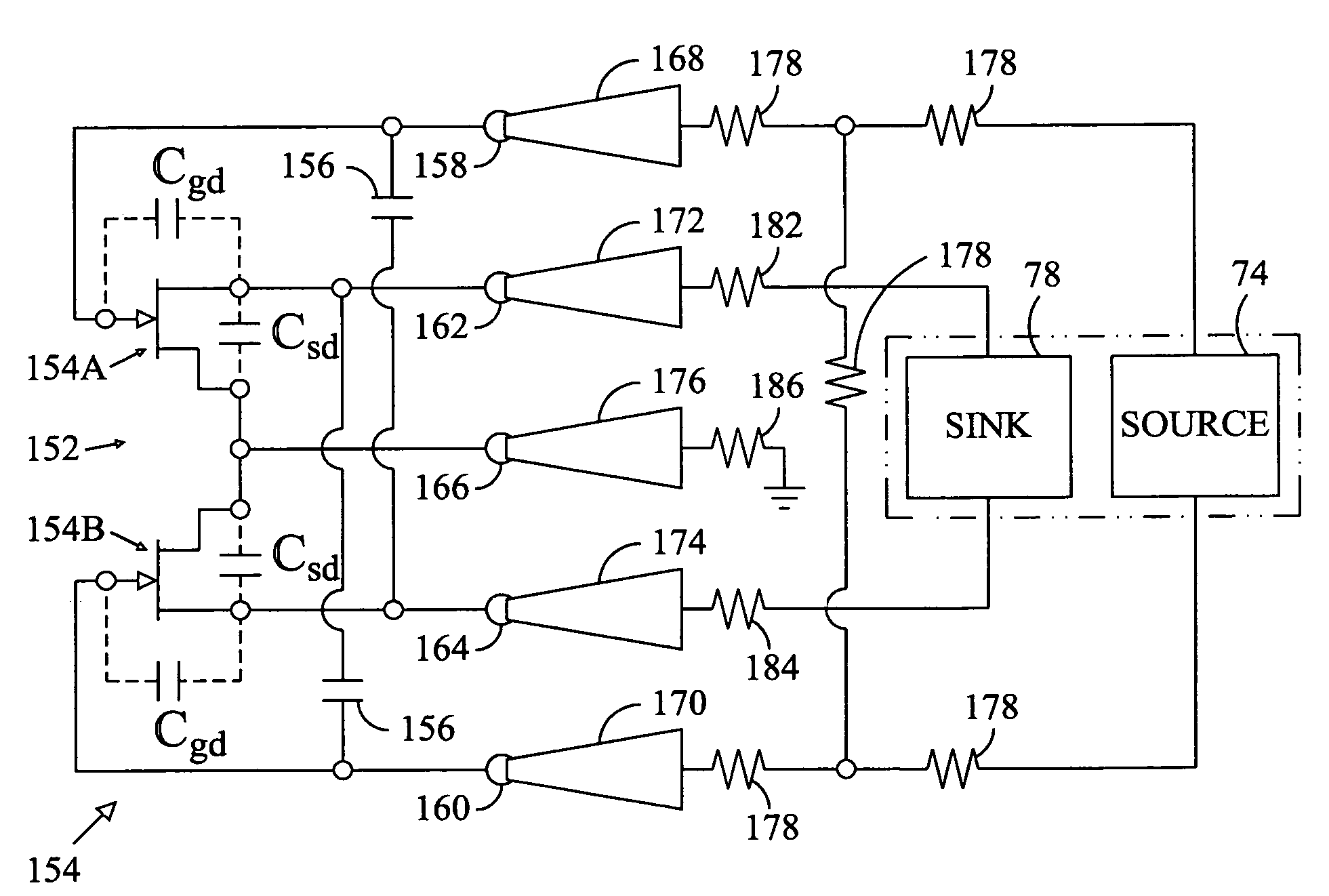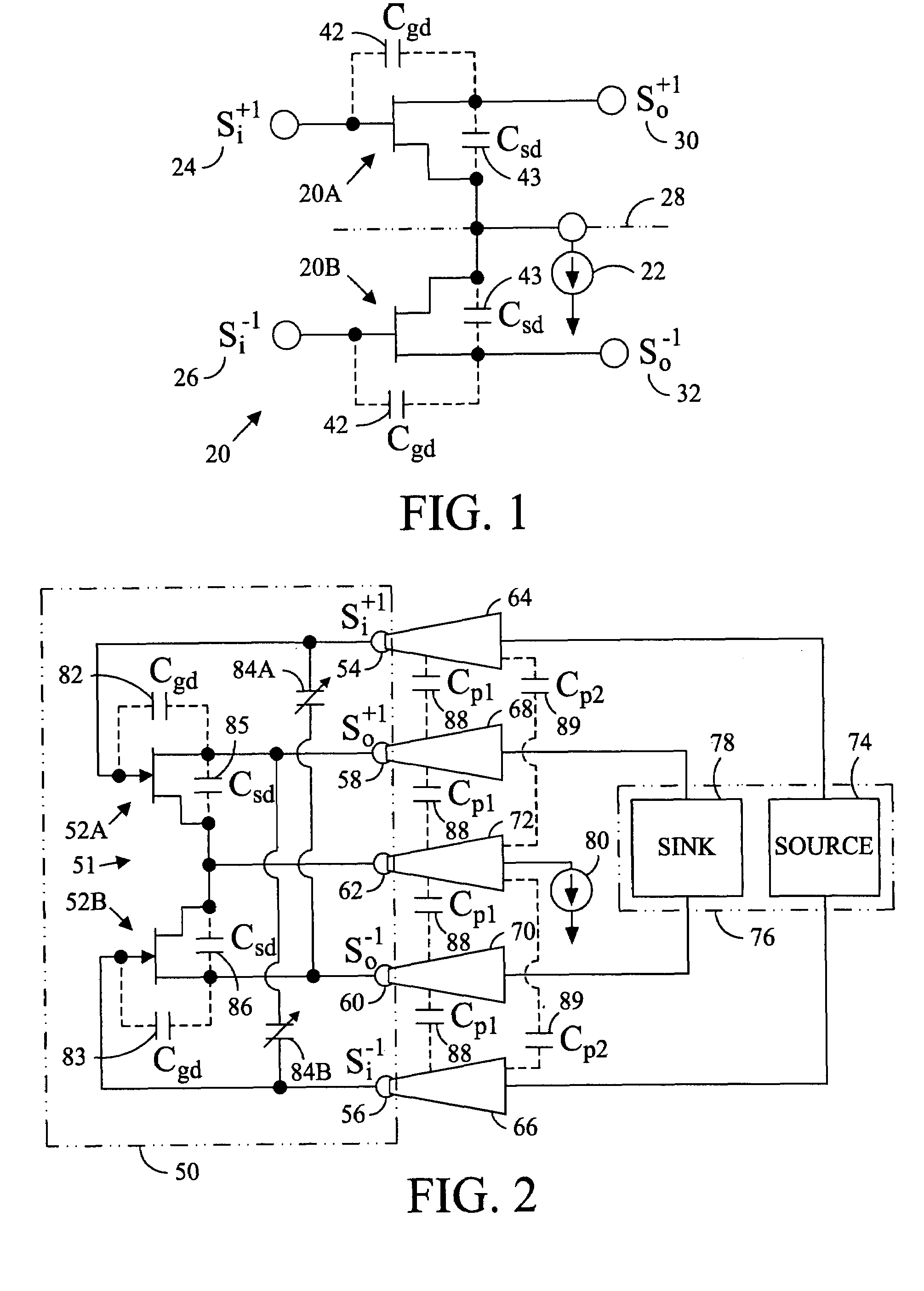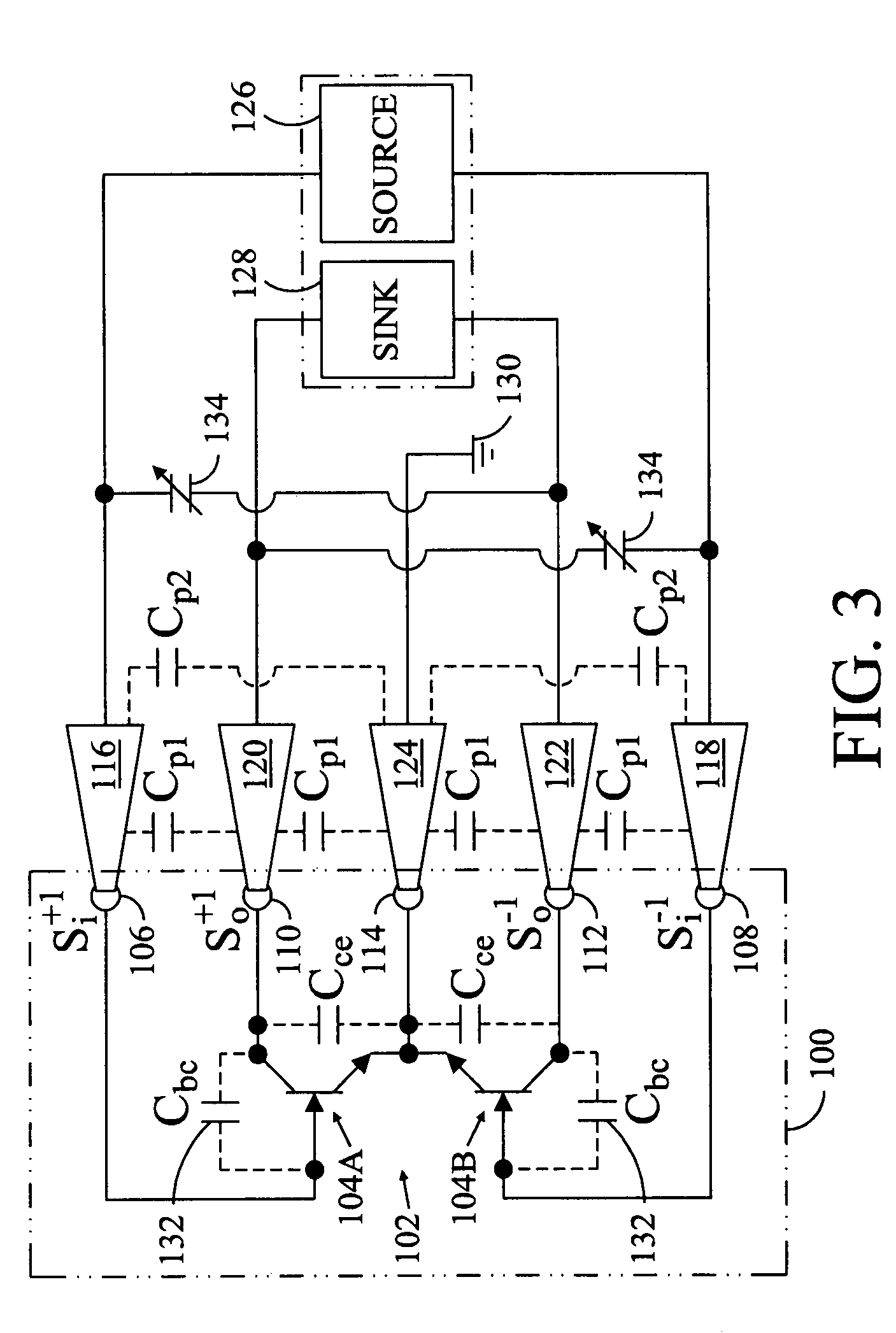Test structure and probe for differential signals
a technology of differential signals and probes, applied in the field of probes and test structures for differential signals, can solve the problems of affecting the accuracy of testing, electrically, and noise from external sources such as adjacent conductors, and affecting the operation of differential devices
- Summary
- Abstract
- Description
- Claims
- Application Information
AI Technical Summary
Benefits of technology
Problems solved by technology
Method used
Image
Examples
Embodiment Construction
[0016]Referring in detail to the drawings where similar parts are identified by like reference numerals, and, more particularly to FIG. 1, a differential gain cell 20 is a balanced device comprising two nominally identical circuit halves 20A, 20B. When biased, with a DC current source 22, and stimulated with a differential mode signal, comprising even and odd mode components of equal amplitude and opposite phase (Si+1 and Si−1) 24, 26, a virtual ground is established at the symmetrical axis 28 of the two circuit halves. At the virtual ground, the potential at the operating frequency does not change with time regardless of the amplitude of the stimulating signal. The quality of the virtual ground of a balanced device is independent of the physical ground path and, therefore, balanced or differential circuits can tolerate poor RF grounding better than circuits operated with single ended (ground referenced) signals. Differential devices can also typically operate with lower signal powe...
PUM
 Login to View More
Login to View More Abstract
Description
Claims
Application Information
 Login to View More
Login to View More - R&D
- Intellectual Property
- Life Sciences
- Materials
- Tech Scout
- Unparalleled Data Quality
- Higher Quality Content
- 60% Fewer Hallucinations
Browse by: Latest US Patents, China's latest patents, Technical Efficacy Thesaurus, Application Domain, Technology Topic, Popular Technical Reports.
© 2025 PatSnap. All rights reserved.Legal|Privacy policy|Modern Slavery Act Transparency Statement|Sitemap|About US| Contact US: help@patsnap.com



